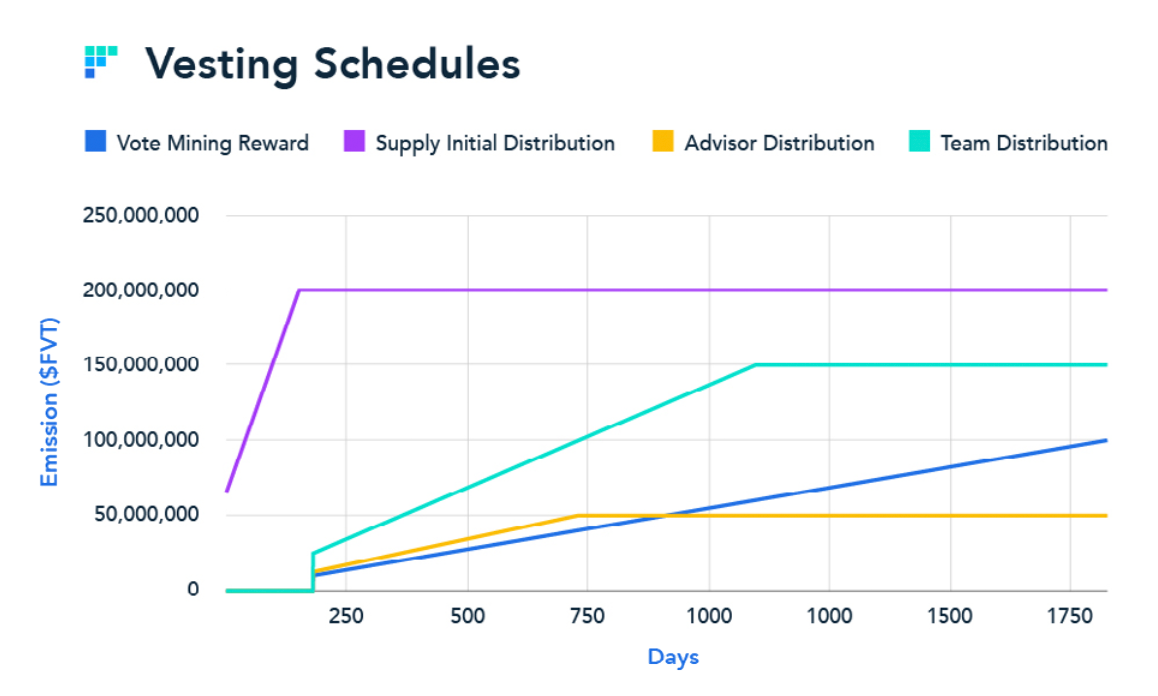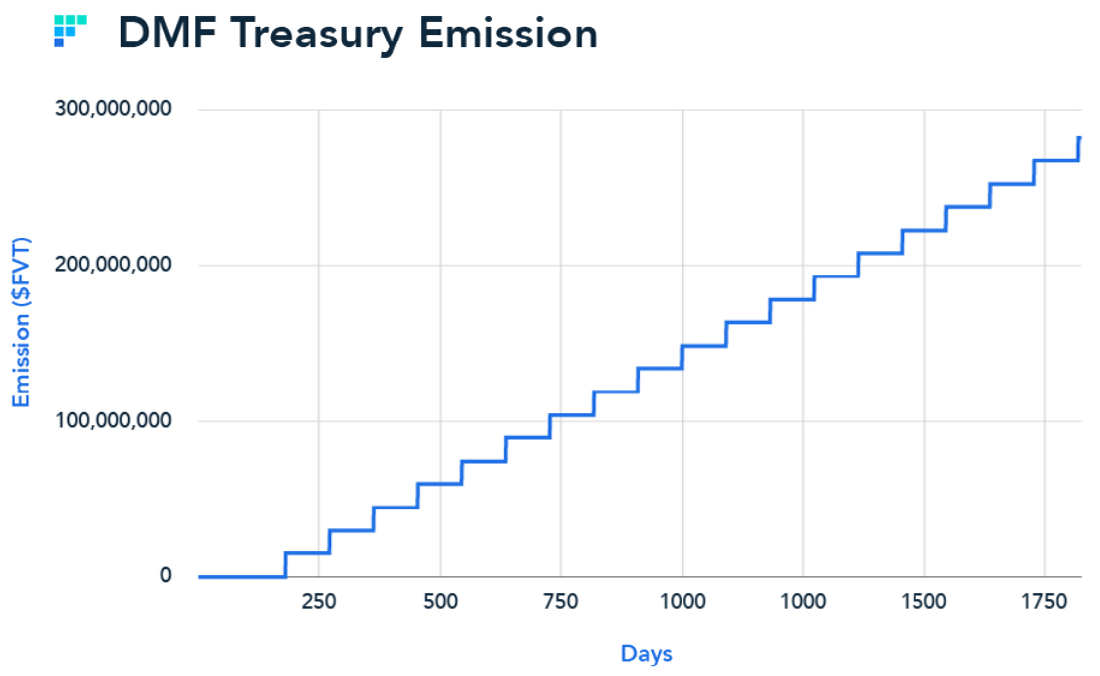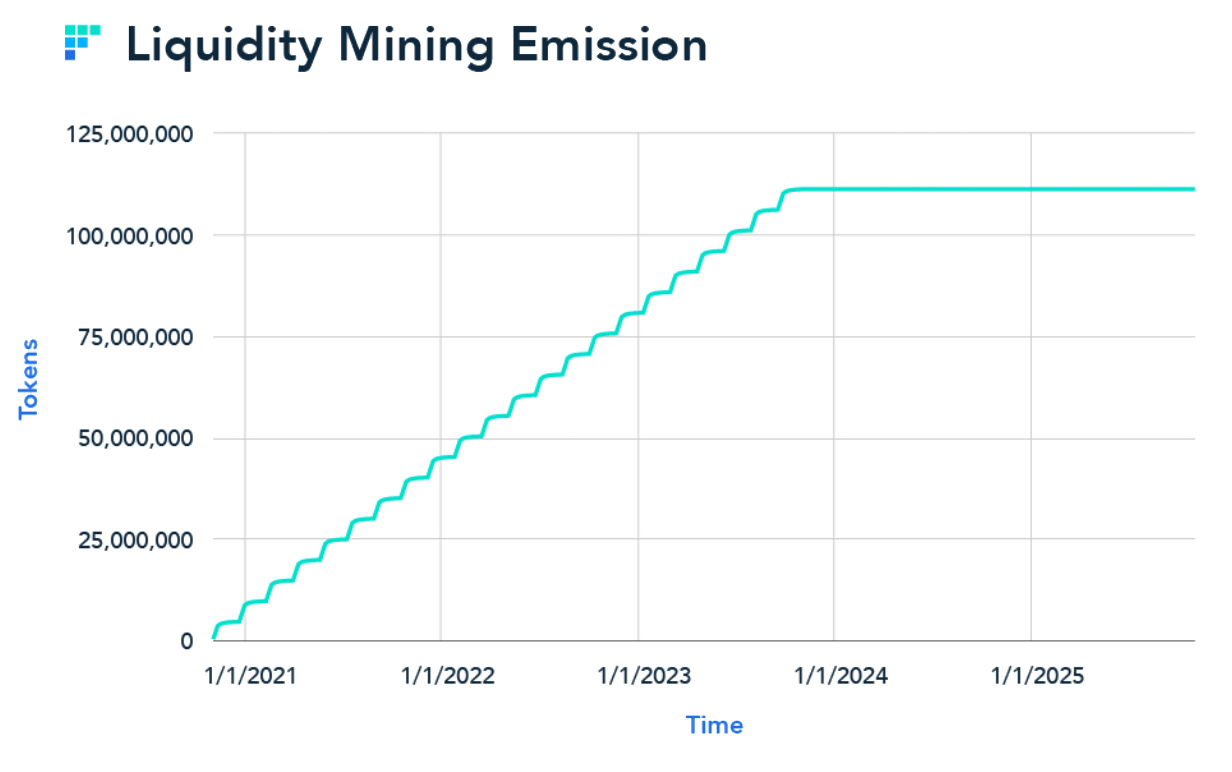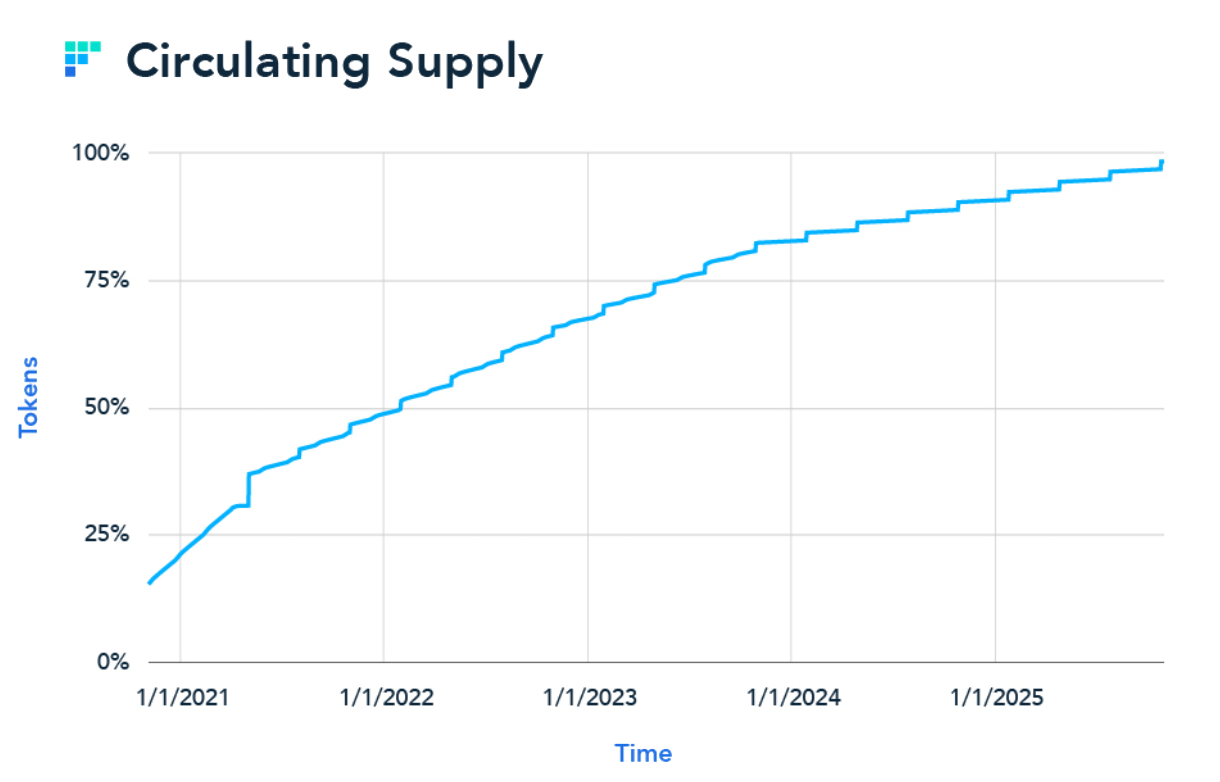Token Metrics
Initial Distribution
Team and Advisor Stakes
Governance Incentive

The DMF Treasury

Liquidity Pool

Circulating Supply
The aggregated emission from these schedules provides us with the following emission curve represented as a percentage of total genesis supply.

Inflationary Mechanisms
The finance.vote core contracts hold the power to mint new tokens beyond the 1,000,000,000 $FVT at genesis. This is chosen to ensure that there is an open ended solution to incentivising adoption. In the first instance a small amount of additional inflation is used to seed liquidity for reward pools in our vote markets, starting @ 100,000 $FVT per week / per market.
Deflationary Mechanisms
In order for any user to take part in the system, they must first obtain a Digital Identity Token (DIT). In order to do this, users must obtain $FVT and burn at least 100 to take part. This introduces an adoption based deflationary dynamic to the system.
Emission Schedules and Monetary Policy
Cliff-linear Vesting

Vote Mining
Pulsed Liquidity Incentives

Summary
The finance.vote token economy introduces a range of dynamic crypto economic monetary policy ideas with the view of creating a sustainable crypto economic hub. The system uses collective decision making and voting technology to create a participatory token economy driven by the desire to understand the cryptospace itself.